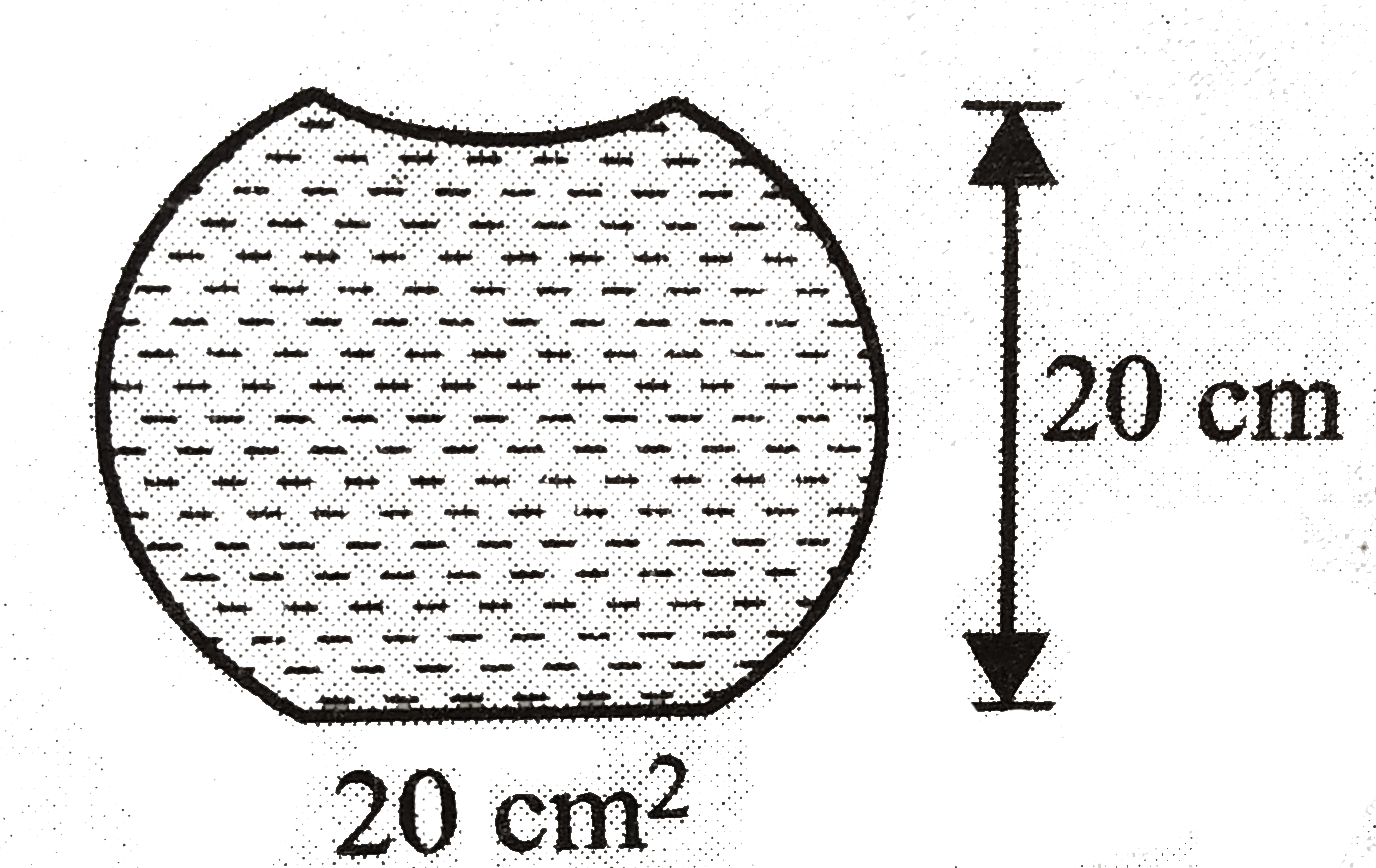A cubic lump of cheese of area 10cm2 and weight 3 N stands on a table. Calculate the pressure exerted by it on the table?
To solve the problem of calculating the pressure exerted by the cubic lump of cheese on the table, we can follow these steps:
Step 1: Understand the formula for pressure
Pressure (P) is defined as the force (F) applied per unit area (A). The formula is given by:
P=FA
Step 2: Identify the given values
From the problem, we have:
- Weight of the cheese (which acts as the force) F=3N
- Area of contact A=10cm2
Step 3: Convert area from cm² to m²
Since pressure is typically expressed in Pascals (N/m²), we need to convert the area from cm² to m². The conversion factor is:
1cm2=10−4m2
Thus,
A=10cm2=10×10−4m2=10−3m2
Step 4: Substitute the values into the pressure formula
Now we can substitute the values of force and area into the pressure formula:
P=FA=3N10−3m2
Step 5: Calculate the pressure
Perform the calculation:
P=3×103N/m2
This can also be expressed in Pascals:
P=3×103Pa
Final Answer
The pressure exerted by the cubic lump of cheese on the table is:
P=3000Pa
---
Pressure (P) is defined as the force (F) applied per unit area (A). The formula is given by:
P=FA
From the problem, we have:
- Weight of the cheese (which acts as the force) F=3N
- Area of contact A=10cm2
Since pressure is typically expressed in Pascals (N/m²), we need to convert the area from cm² to m². The conversion factor is:
1cm2=10−4m2
Thus,
A=10cm2=10×10−4m2=10−3m2
Now we can substitute the values of force and area into the pressure formula:
P=FA=3N10−3m2
Perform the calculation:
P=3×103N/m2
This can also be expressed in Pascals:
P=3×103Pa
The pressure exerted by the cubic lump of cheese on the table is:
P=3000Pa
Topper's Solved these Questions
- BOOK - ICSECHAPTER - FORCE AND PRESSURE EXERCISE - Questions (Choose the correct option to fill in the blank)8videos
FORCE AND PRESSURE
- BOOK - ICSECHAPTER - FORCE AND PRESSURE EXERCISE - Exercises (Section I) Name the following6videos
FORCE AND PRESSURE
- BOOK - ICSECHAPTER - FORCE AND PRESSURE EXERCISE - EXERCISE 3.3 (STUDY QUESTIONS)9videos
FORCE AND PRESSURE
- BOOK - ICSECHAPTER - ENERGYEXERCISE - THEME ASSIGNMENT4videos
ENERGY
- BOOK - ICSECHAPTER - HEAT TRANSFER EXERCISE - Picture Study2videos
HEAT TRANSFER
Similar Questions
A force of 25 N acts on a body of area of cross-section 20 cm2. Calculate the pressure exerted by the body in pascals.
View SolutionThe sides of rectangular plate of mass 20 kg is 5 m x 4 m placed on a horizontal table. The pressure exerted by the block on the table is (Take g=10ms2)
View SolutionIf a girl is wearing a pointed heel which has an area of cross section 2cm2, and if her mass is 650 N, find out the pressure exerted by her on the floor (remember to calculate for both legs)
View SolutionO2 and He are taken in equal weights in a vessel. The pressure exerted by Helium in the mixture is
View SolutionA book whose mass is 2 kg rests on a table. Find the magnitude of the force exerted by the table on the book.
View SolutionA block of iron of mass 7.5 kg and of dimensions 12 cm x 8 cm x 10 cm is kept on a table top on its base of side 12 cm x 8 cm.
Calculate : Pressure exerted on the table top
Take 1 kgf= 10 NView SolutionA glass full of water has a bottom of area 20cm2, top of area 20cm, height 20cm and volume half a litre.

a. Find the force exerted by the water on the bottom.
b. Considering the equilibrium of the v, after. find the resultant force exerted by the side, of the glass on the water. Atmospheric pressure =1.0×105N/m2. Density of water =1000kg/m−3 and g=10m/s2View SolutionThe pressure exerted on the smaller and the larger piston of a hydraulic machine is 15 Pa Calculate the force exerted by it on the larger piston, if the area of cross section of the larger piston is 4m2.
View SolutionIf the weight of a box is 500 N and the area of contact is 300cm2, find the pressure exerted by the box.
View SolutionA book of length 15 cm and breadth 10 cm is kept on a table. Its area would be
View Solution

